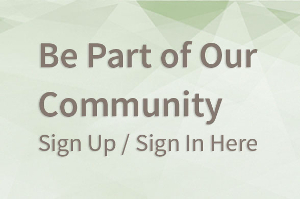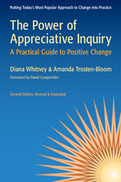BK Blog Post
Change Methods - Seven Basic Characteristics
 Posted by
David Marshall,
Vice President of Editorial and Digital ,
Berrett-Koehler Publishers Inc.
Posted by
David Marshall,
Vice President of Editorial and Digital ,
Berrett-Koehler Publishers Inc.
David Marshall heads the editorial department, which is responsible for 40-50 new titles per year and 5-10 digital products or initiatives.
Change Methods: Seven Basic Characteristics
(abridged from The Change Handbook: The Definitive Resource on Today’s Best Methods for Engaging Whole Systems by Peggy Holman, Tom Devane, and Steven Cady)
Whole system change methods continue to increase in recognition, variety, and use. The first edition of this book included 18 methods and just a few short years later, there are more than 60 methods in this second edition. This creative explosion provides great opportunities for reaching further into organizations and communities to engage people in making a positive and productive difference.
So, let’s say you need to make a change, you have looked at a variety of methods, and you come across this compendium of more than 60 organization development methods. Where do you start? What’s the difference between one method and another . . . how do you make sense of them all? How do you speak intelligently about them . . . helping clients, coworkers, employees, community members, stakeholders, leaders . . . understand the distinctions? WHAT DO YOU DO? This chapter defines seven characteristics to help you see the whole of the methods available to support your wor
Understanding Options: Seven Characteristics to Consider
Categorizing anything is tricky. On one hand, we strive to simplify our world with methods and models, categories, and taxonomies. On the other hand, simplification limits and potentially undermines the essential concepts we strive to better understand. Classification does not stand alone; it is a starting point for consideration. With elaboration and context, a fuller picture emerges. The frame- work that follows is one lens into that picture. Coupled with the information in the rest of the book, we believe you will have what you need to make sound choices regarding which method(s) can best help you.
Purpose
In Alice’s Adventures in Wonderland by Lewis Carroll, the cat said, “If you don’t know where you are going, any road will get you there.” Purpose ensures we go somewhere intentional. It answers the questions: What is the focus and aim of our work? What methods are designed to do this? We identified five overarching dimensions of purpose. Planning, structuring, and improving describe processes designed to accomplish a specific purpose. Adaptable methods span these purposes. Supportive processes enhance the work, whatever its purpose.
- Adaptable methods are used for a variety of purposes in organizations or communities, including planning, structuring, and improving. This group uses principles and practices that adjust to varying needs.
- Planning methods help people in communities and organizations shape their future together. These methods set strategic direction and core identity through activities such as self-analysis, exploration, visioning, value clarification, goal setting, and action development.
- Structuring methods organize the system to create the desired future. They rely on an effective plan and result in redefined relationships among people and redesigned work practices.
- Improving methods increase effectiveness and create operational efficiencies in such areas as cycle time, waste, productivity, and relationships. Basic assumptions of how the organization works often stay the same, while breakthroughs are achieved in processes, relationships, individual behaviors, knowledge, and distributive leadership.
- Supportive refers to practices that enhance the efficacy of other change methods, making them more robust and suitable to the circumstances and participants. They are like spices in a meal, enriching methods to satisfy the unique tastes of the client. They weave into and often become permanent elements of other methods.
Type of System
Who do these methods help? What kinds of people are coming together? How might we think of the system undergoing the change? A simple and useful distinction is organizations and communities.
- Organizations have discernable boundaries and clearly structured relationships that help determine which employees, functions, levels, customers, and suppliers to include in a proposed organizational change.
- Communities are more diffuse, often involving a range of possible participants-citizens, different levels of government, associations, agencies, media, and more. These systems are often emerging entities that exist around a common bond, sometimes based in purpose, sometimes in relationships. Alliances, cities, associations, cohousing groups, and activist rallies are examples of geographic communities, communities of interest, and communities of practice.
Event Size
Most of the methods employ one or a series of events along the change journey. Though they all focus on whole systems, some engage large numbers of participants at one time, while others involve smaller numbers over time. Still others use technology to bring people together across time and space. What best serves your situation? Size has many implications, both strategic and practical. Do we involve the whole system or a meaningful subset? What facilities do we need? How many people do we include? What are the potential costs per person and how much can we afford? It’s a tough balance to include as much of the system as you can while dealing with the constraints of space, time, and cost.
Duration
When determining what process to use, time is always a factor. What is the sense of urgency? What sort of pace can the organization or community assimilate? What is possible in terms of how frequently people gather? Whatever the nature of the process, it requires time for preparation, for event(s), and for follow-up. This is often tough to characterize because it is 18 navigating through the methods the big picture 19 highly dependent on the complexity of the initiative. The contributing authors have given us a range based on how their process is typically used.
Cycle
Some methods have a natural beginning and ending. Others are suited for a periodic planning cycle, and some become “the way things are done around here.” We have identified the following cycles:
- As Needed. Done to accomplish an intended purpose, these methods are not typically scheduled to be repeated. Sometimes they are used only once; however, they may be used again if a new purpose arises.
- Periodic. Repeated over time, these methods are commonly used for planning processes. For example, repetition may be scheduled every few years.
- Continuous. For some methods, the objective is for the event to cease being an event. The full benefit is realized when the application becomes everyday practice.
Practitioner Preparation
People often ask, “How quickly can I get started with using this method on my own?” Some methods are deceptively simple to “just do,” yet there is art and nuance to mastering them over time. Mastery of virtually any process is a lifetime’s work. The more complex the change effort, the more advisable it is to get skilled change management support. Still, knowing what’s involved to prepare new practitioners provides insight into how quickly and broadly change can spread. Here are the distinctions we offer for getting started as a new practitioner:
- Self-Directed Study. Given a background in group work, with the aid of a book, a video, support from a community of practice (perhaps via the internet), or some in-person coaching, a new practitioner can take his or her first steps independently. Because these practices look so simple, this caution is especially important: Start with straightforward applications!
- General Training. Before attempting this work on your own, attend a workshop or work with someone skilled in the process. In some cases, training workshops offer follow-up field experiences that provide opportunities to work as part of a support team.
- In-depth Training. These change methods require a significant investment in training and practice before working on your own. Often, there is formal training, certification from a governing body, and mentoring.
Selected Change Methods (from Change Methods Handbook table of contents)
Adaptable Methods
- Appreciative Inquiry: A Positive Revolution in Change--David L. Cooperrider and Diana Whitney (see related AI article)
- Collaborative Loops--Dick Axelrod and Emily Axelrod
- Dialogue and Deliberation--Sandy Heierbacher
- Integrated Clarity: Energizing How We Talk and What We Talk about in Organizations--Marie Miyashiro and Marshall Rosenberg
- Open Space Technology--Harrison Owen
- The Technology of Participation (ToP)--Marilyn Oyler and Gordon Harper
- Whole-Scale Change--Sylvia L. James and Paul Tolchinsky
- The World Cafe--Juanita Brown, Ken Homer, and David Isaacs
Planning Methods
- Dynamic Planning and the Power of Charrettes--Bill Lennertz
- Future Search: Common Ground under Complex Conditions--Marvin Weisbord and Sandra Janoff
- Scenario Thinking--Chris Ertel, Katherine Fulton, and Diana Scearce
- Search Conference--Merrelyn Emery and Tom Devane
Structuring Methods
- Community Weaving--Cheryl Honey
- Participative Design Workshop--Merrelyn Emery and Tom Devane
Improving Methods
- Rapid Results--Patrice Murphy, Celia Kirwan, and Ronald Ashkenas
- The Six Sigma Approach to Improvement and Organizational Change--Ronald Snee
Supportive Methods
- Online Environments for Supporting Change--Nancy White and Gabriel Shirley
- Playback Theatre--Sarah Halley and Jonathan Fox
- Visual Recording and Graphic Facilitation: Helping People See What They Mean--Nancy Margulies and David Sibbet
Selected Change Methods above available as chapters: Fast Fundamental Whitepapers.
See complete Change Methods books from Berrett-Koehler Publishers.
Appreciative Inquiry article with selected AI books from Berrett-Koehler Publishers.
Organizational Development article with selected OD books from Berrett-Koehler Publishers.
If you would like to hire Change Methods experts to consult, train, or speak at your company, non-profit, or government organization, please visit The BK Expert Directory where you can engage with our authors.
###





